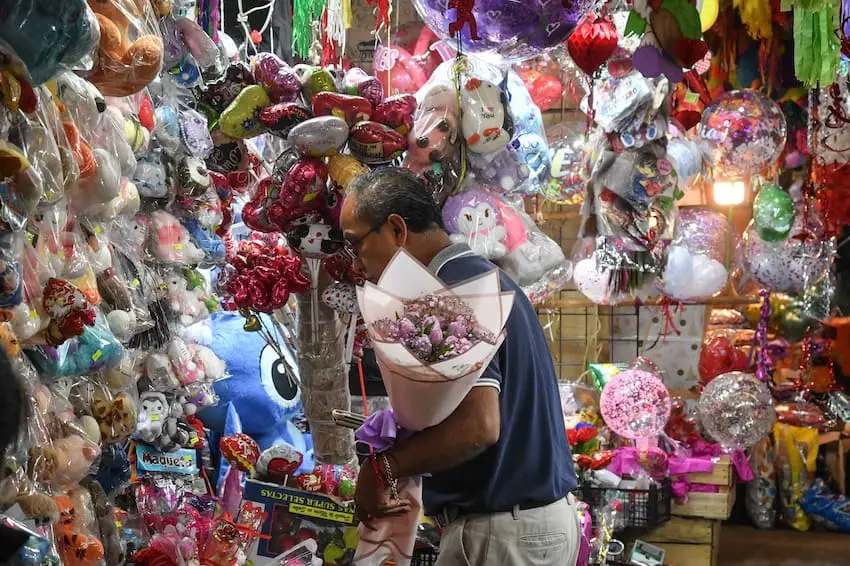Mexicans are expected to spend 22.3% more on gifts and dining out for Valentine’s Day, or Día del Amor y la Amistad, this year than in 2023, per a report from Mexico’s National Alliance of Small Merchants (ANPEC).
How much are Mexicans predicted to spend this year?

According to the ANPEC report, the average cost of the celebration per household could be up to 2,208.69 pesos (US $128).
With inflation continuing — the annual headline rate was recorded at 4.88% in January — the cost of popular Valentine’s Day gifts has spiked. Between 2023 and 2024, the average cost of one dozen roses for Valentine’s Day increased by 40%, from 240.86 to 336.04 pesos, according to ANPEC.
Meanwhile, the Confederation of National Chambers of Commerce, Services, and Tourism (Concanaco) has predicted that the total national Valentine’s Day spend this year will exceed 28 billion pesos (US $1.6 billion).
What do Mexicans buy for Valentine’s Day?
According to Concanaco chief Héctor Tejada Shaar, the sectors that will benefit the most are hospitality, restaurants, department stores, candy stores, and flower shops.
Some of the most popular affordable treats include heart-shaped lollipops, at an average price of 80 pesos, balloons for 119 pesos, a dozen roses for 336 pesos, a stuffed animal for 350 pesos and a romantic dinner for two at a mid-range establishment for 1,102 pesos.
Many Mexicans have opted to celebrate at home this year according to analysis from consumer research firm YouGov.
Based on the survey results, 28.3% of the participants intend to celebrate Valentine’s Day by preparing a homemade dinner, while 25% said they would watch movies or TV shows at home. Giving sweets or chocolates was the top choice for 25% of the respondents, while 19.6% of them said they would opt for gifting flowers.

How many Mexicans are in a romantic relationship?
To provide insight into the romantic lives of the Mexican population in the lead-up to Valentine’s Day, the national statistics agency INEGI published data on the marital status of people aged 15 and above.
In the third quarter of 2023, there were 100.6 million residents aged 15 or older in the country, and 36.9% are married, 33.1% are single, 17.8% cohabit unmarried with a partner, and 12.2% are separated, divorced, or widowed.
The highest proportion of unmarried people was those aged 15 to 29, who accounted for 72.7% of the population in this age group. Among adults aged between 30 and 59, 48.5% were married while 22.5% were cohabiting.
Among adults aged 60 and above, 52.6% are married or cohabiting, while 23.2% are widowed.
Meanwhile, the divorce rate in Mexico has shown an upward trend since 2010, registering a 50% increase since 2013 according to data published last September; however, in 2022, there were still around three marriages for every divorce.
With reports from El Informador, ADN 40, El País and Milenio
